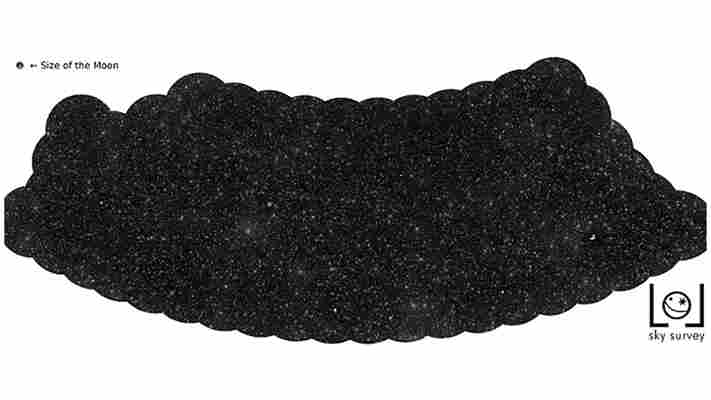The CPU wars wage on, and AMD continues to eat away at Intel’s dominance, with new figures showing AMD now has its highest ever share of the market.
In the fourth quarter of 2021, AMD hit 25.6% of the overall x86 CPU market. While this may not seem like a huge number, it represents a major milestone, as this is the first time AMD has gained so much of the market, and as Tom’s Hardware reports , it beats the company’s previous record, when it hit 25.3% way back in 2006.
AMD’s comeback has been pretty remarkable to witness. Not only has it regained market share through a series of excellent releases with its critically-acclaimed Ryzen lineup of processors , but it has done so in a much more competitive marketplace. Intel, AMD’s biggest rival, remains a formidable foe, and still accounts for the vast majority of x86 CPU sales.
There’s also a growing market for x86 alternatives, such as ARM-based processors, perhaps the most famous of which is the new Apple M1 series of chips.
This means AMD’s success is particularly impressive, and the increased pressure has meant that Intel has had to respond with more innovative products. The results come from Mercury Research .
According to AMD CEO Dr. Lisa Su, AMD has “gained client processor revenue share for the seventh straight quarter.”
The company has also been doing very well in the lucrative server business, with Tom’s Hardware reporting that the company has just had its 11th straight quarter of CPU growth. AMD has also benefited from the continued success of the new PS5 and Xbox Series X games consoles, both of which use AMD chips .

Analysis: Intel is also doing well
Normally, news of AMD doing well means it’s bad news for Intel, but it actually seems like both companies are doing well. Intel still remains the market leader by quite some margin, and it’s also increased its unit share in desktop and laptop processors. AMD has been impacted chip shortages, which has led to the company focussing on higher-margin products to keep up profitability.
This is Intel taking back some of the market share it lost to AMD in the previous year, with its Tiger Lake processors aimed at gamers and high-end enthusiasts leading the charge. It has also just launched its Alder Lake desktop and laptop processors, and early hype for these processors has been strong as well, which could lead to even more gains.
It’s on the server side where Intel is losing ground, then, and while that may not seem like a glamourous market compared to high-end gaming CPUs, it’s still worth huge amounts of money, so Intel must be looking to reverse its fortunes there.
As we’ve said in the past, healthy competition between Intel and AMD is great for consumers, as it means more innovative and competitive products from them both as they battle for our custom. Intel has certainly raised its games in the face of a renewed onslaught from AMD, and both hardware makers will be behind some of the most exciting laptops coming out in 2022 as well.
Those aren't stars – they're black holes
An international team of astronomers just released a remarkable map of the night sky without a single star, but which is instead filled with 25,000 supermassive black holes.
We know what you're thinking. How is that possible if black holes don't radiate light, you silly gooses? That's only half right though. The black hole itself is more or less invisible, but if it's munching on a star or some other object, the tidal forces of its gravity will tear it apart and create a flattened accretion disk around it.
The material in the disk is spinning around the event horizon of the black hole at significant fractions of the speed of light and sometimes that material gets ejected away by the intense magnetic field of the black hole, creating jets of particles at the magnetic poles of the black hole.
These relativistic jets, as they are called, emit a lot of radio waves. This is what astronomers mapped in the northern skies using a network of 52 radio telescopes across Europe known as the Low Frequency Array (LOFAR).

"This is the result of many years of work on incredibly difficult data," said lead researcher Francesco de Gasperin , formerly of Leiden University but now at Universität Hamburg, Germany. "We had to invent new methods to convert the radio signals into images of the sky."
The incredible map shows the low-frequency radio signals from 25,000 supermassive black holes at the center of distant galaxies, and covers only about 4% of the night sky in the northern hemisphere. The researchers hope to eventually create an entire sky atlas of supermassive black holes visible in the northern hemisphere.
The map was included as part of a study that has been accepted for publication in a future edition of the journal Astronomy & Astrophysics.
Analysis: computer algorithms help us see the universe
One of the problems with seeing radio waves from supermassive black holes is that they often produce low-frequency radio waves. Normally this wouldn't be a problem, but for Earth-based radio telescopes, Earth's ionosphere completely reflects radio signals lower than 3MHz and distorts signals up to 30MHz.
"It's similar to when you try to see the world while immersed in a swimming pool," said study co-author Reinout van Weeren, of the Leiden Observatory. "When you look up, the waves on the water of the pool deflect the light rays and distort the view."
In order to counter this, researchers developed a supercomputer algorithm that corrected for the distorting effect of the ionosphere every four seconds of the 256 hours of observation.
"After many years of software development, it is so wonderful to see that this has now really worked out," said study co-author Huub Röttgering, Scientific Director of the Leiden Observatory.
This isn't the first time a computer algorithm helped astronomers chart the heavens. Most famously, in 2019, Katie Bouman designed the algorithm that stitched together the various data streams from the Event Horizon Telescope to give us the first image of a black hole's event horizon.
Computer algorithms have long been instrumental in astronomy, and as our computers become even more powerful, the power of those algorithms to open our eyes to the universe will only grow.
Qualcomm is bringing 5G to your next laptop and PC
Qualcomm has unveiled two new Snapdragon modules that it hopes will make 5G connectivity ubiquitous across laptops and desktop computers , as well as smartphones .
The Snapdragon X65 and X62 Modem-RF systems fit neatly into an M.2 slot, giving hardware vendors a simple way to build in 5G capability without having to compromise on device form factor or power efficiency.
Speaking during a press conference at MWC 2022 , Qualcomm CEO Cristiano Amon explained that the drive towards remote and hybrid working is ushering in a new generation of "always-on connected PCs".
“Mobile technology is going literally everywhere," he said. "We've always believed in the convergence of mobile and PC."
"Working from anywhere is a reality today. Welcome to the 5G-connected era of enterprise productivity."

Qualcomm takes 5G beyond the smartphone
Although almost all flagship smartphones offer support for 5G, comparatively few laptop and PC vendors currently manufacture devices that can take advantage of the new networking technology.
As the number of 5G networks continues to expand worldwide and the rollout of private 5G in industrial and enterprise scenarios gathers pace, the need for a wider range of devices that support 5G will only grow.
Based on reference designs published last year, the X65 and X62 modules are designed to meet this need, opening the door to a far deeper pool of 5G-enabled hardware, including not only desktops and laptops, but XR devices, handheld games consoles and more.
“Qualcomm Technologies is making an intelligently connected world possible through our leadership in connectivity and high-performance, low-power computing,” added Gautam Sheoran, VP Product Management at Qualcomm.
“The announcement of the Snapdragon X65 and X62 M.2 Modules is further evidence that we are committed to enabling the ecosystem and the 5G opportunity beyond smartphones.”
The Snapdragon X65 and X62 are currently undergoing sampling, but should become commercially available in H2 2022, Qualcomm says.
MWC (Mobile World Congress) is the world's largest showcase for the mobile industry, stuffed full of the newest phones, tablets, wearables and more. TechRadar is reporting on the show all week. Follow our MWC 2022 live blog for the very latest news as it happens and visit our dedicated MWC 2022 hub for a round-up of the biggest announcements.
Disclaimer: Our flights and accommodation for MWC 2022 were funded by Huawei, but the organization had no editorial control over the content of this article.